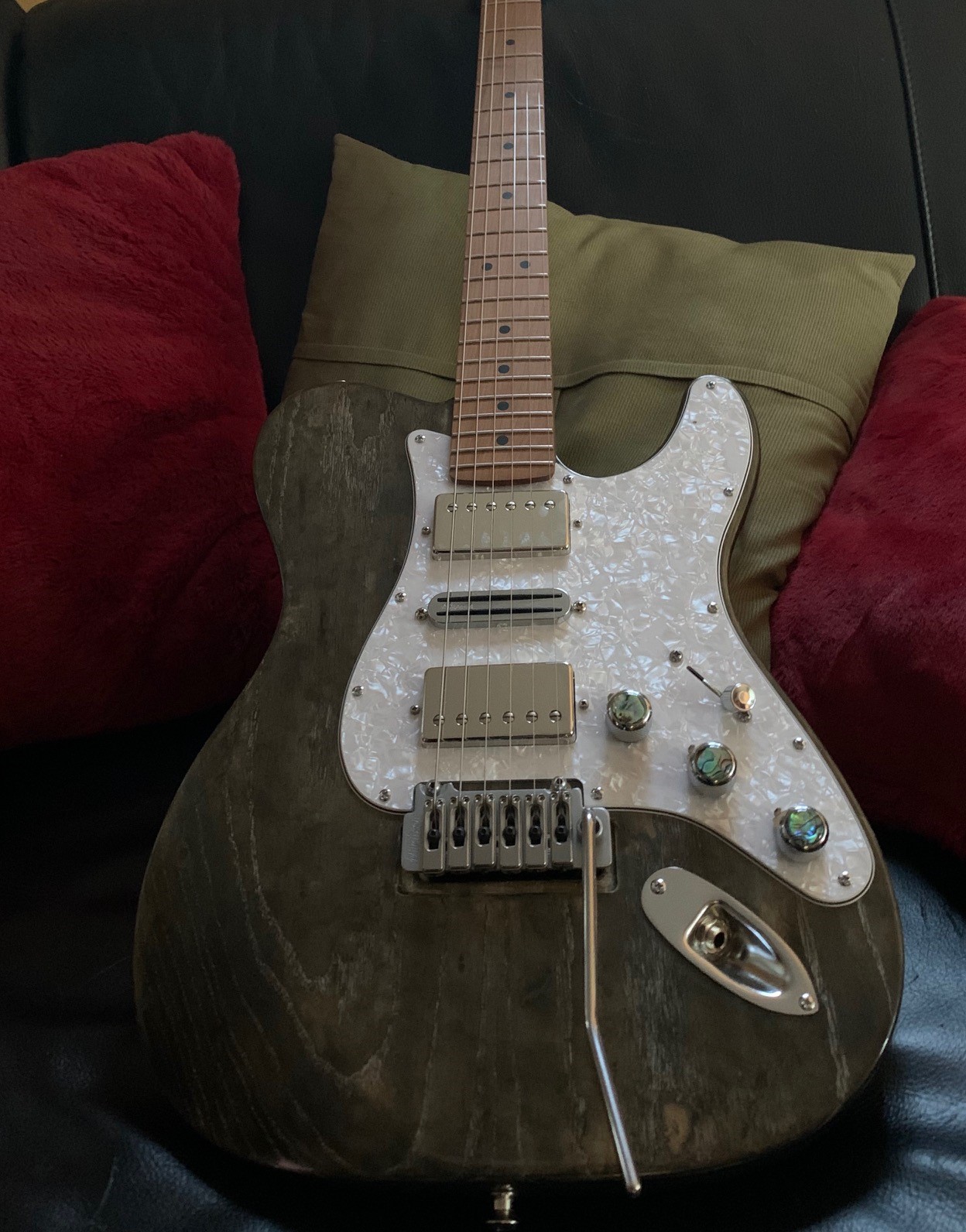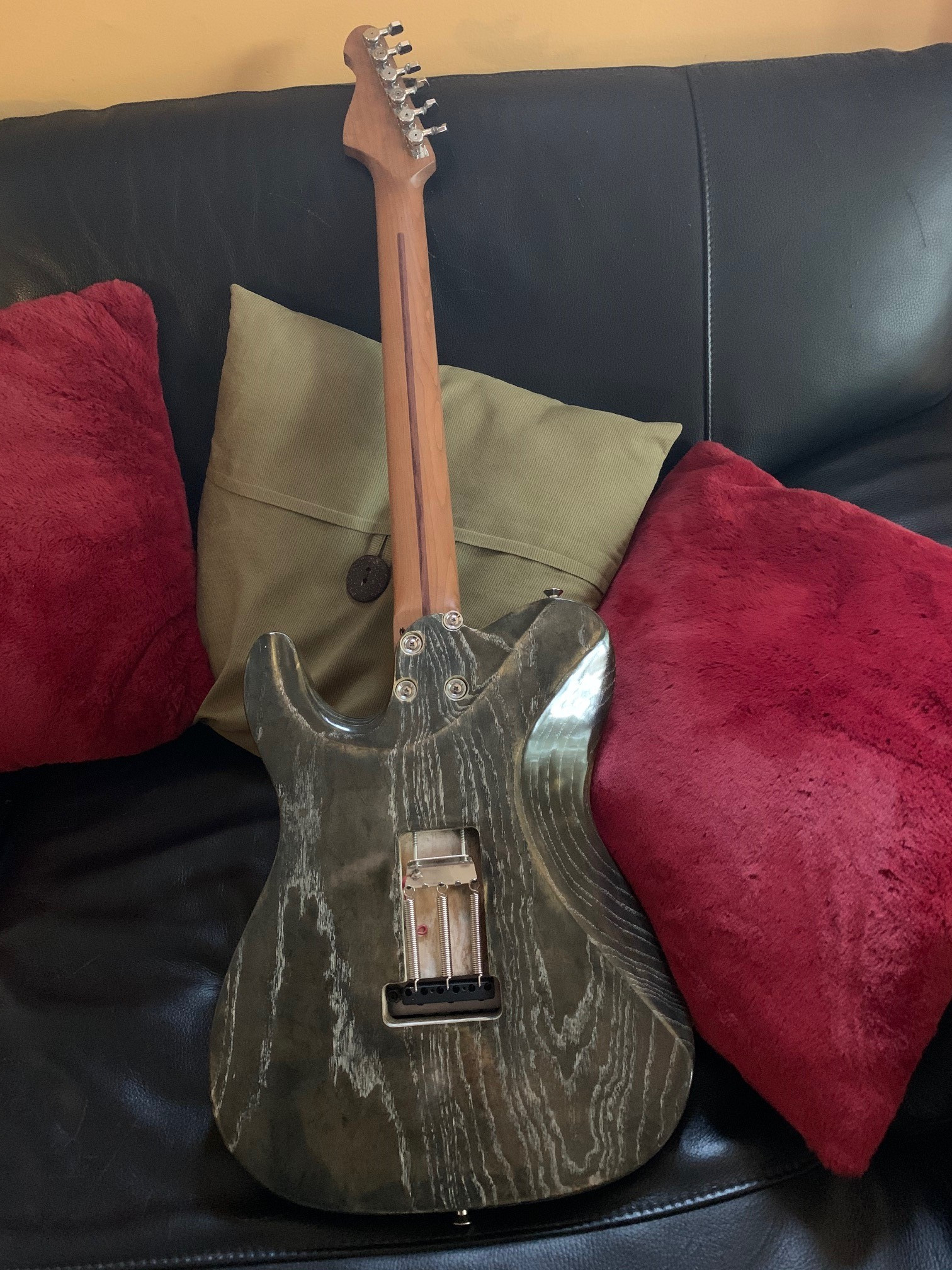alexreinhold said:
I did this guitar over the summer. This gives you an idea of reverse tinting for the grain....
This is beautiful!!! I absolutely love it and it's definitely very close to what I have in mind. May I ask what products you used and in which sequence?
Used this for the white
https://www.amazon.com/gp/product/B005RYYTU6/ref=ppx_yo_dt_b_asin_image_o00_s00?ie=UTF8&psc=1
Used this for the dye. The color the guitar wound up being was the culmination of a lot of trying to different colorings. It went through being all white (actually a little sorry I didn't stick with this), black, red, yellow, etc. Then hit on this earthy tone that worked.
https://www.amazon.com/gp/product/B00BAKWTMQ/ref=ppx_yo_dt_b_asin_title_o07_s00?ie=UTF8&psc=1
Used this for the sealer -
https://www.amazon.com/dp/B001MQNJ40?psc=1&ref=ppx_pop_dt_b_asin_image
And of course, TruOil -
https://www.amazon.com/dp/B001MQNJ40?psc=1&ref=ppx_pop_dt_b_asin_image
Process.....
Sand body - Go at least up to 240, think I went 600
Use the sealer and lightly "seal" the body. The grain pores won't be filled and will allow the dye in the grain, while preventing the contrast dye applying to the body.
Apply dye to desired color to color the grain
Sand off sealer
Apply overall body color dye. I'd suggest getting some scrap wood (preferably the same type as the body you're making) and do some experimentation with the dye coloring. I found going with a medium color density and applying multiple coats got me better results.
Once dye is done, reseal the body
Lightly sand
Start applying TruOil - If you want a gloss, for the last few coats, thin with half Naptha or Mineral spirits. For applying, I get a big bag of rags from Lowes
https://www.lowes.com/pd/ProLine-8-Pack-Cotton-Cloth/50110534. I started a thread here on best method of applying TruOil, and folks use a wide variety of applying materials...coffee filters, blue shop paper towels, etc.
I applied 2-3 coats of TruOil per day (when starting, you can use 3 coats, once the body starts shining up after a few coats, dial it back to 2 coats/day), for about 2 weeks. I wanted the grain filled to make a even surface. Every other day or so, use wet/dry sandpaper (1000+grit), and the slurry will fill the pores nicely to make an even surface. This video had some great techniques for this
https://www.youtube.com/watch?v=8lO-gIyIYV8. You can also use a filler here instead. He used steel wool. I tried steel wool, but found it left little bits of steel wood on the body. I switched to 1000+ wet/dry sandpaper and this worked better for me.
Again, for a gloss finish, the last few coats mix with 50% Naptha or Mineral Spirits. This will thin the TruOil
Once done, let sit for a month
After sitting, polish up the body. I wound up using car polisher and it worked great
Lastly, get the big bottle of TruOil. Yes, an experienced person can do this process with the small bottle. This has not been my experience. There is a lot of learning in the process, and even with having done 2 guitars now, I still make mistakes and find having the extra from the big bottle, winds up getting used.
Also, keep reading. There are A LOT of very talented people on this site that do waaaaay better work that I do, and will inspire ideas.





